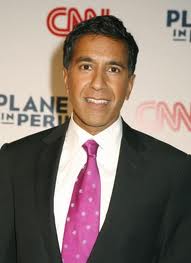 Greed is good. So says Gordon Gekko in the movie Wall Street. But is it the greed of medical professionals, or fear of lawsuits and the practice of “defensive medicine” that drives up medical costs?
Greed is good. So says Gordon Gekko in the movie Wall Street. But is it the greed of medical professionals, or fear of lawsuits and the practice of “defensive medicine” that drives up medical costs?
The other day I responded to Dr. Sanjay Gupta’s op-ed in the New York Times on the related subject of more medical mistakes occurring because of unnecessary medical testing. And in that piece, and the part that spurred me to write, he claimed that defensive medicine was at fault.
This, of course, was dead wrong and has been disproved with empirical evidence.
But in doing that piece, I postulated three reasons why medical costs go up. The first one was deeply cynical:
- Doctors get reimbursed for each test they do, so there is a financial interest in over-ordering tests;
- Doctors simply want to look under every rock in the search for what ails the patient;
- Doctors have heard so much about lawsuits, that they order extra tests to protect themselves (i.e. defensive medicine).
I gave docs the benefit of the doubt and, while mentioning the greed factor in #1, then went on to ignore it and said many were simply conflating the concepts of fear for the patient with fear of the patient.
Now in the New York Times two days ago comes a long story on healthcare giant HCA, a for-profit owner of hospitals. And guess what? I shouldn’t really have ignored #1. Because this publicly traded, and profit-minded company is doing everything possible to increase profits. And that means increasing billing. Another way of saying increasing medical costs. From the article:
Among the secrets to HCA’s success: It figured out how to get more revenue from private insurance companies, patients and Medicare by billing much more aggressively for its services than ever before; it found ways to reduce emergency room overcrowding and expenses; and it experimented with new ways to reduce the cost of its medical staff, a move that sometimes led to conflicts with doctors and nurses over concerns about patient care.
In late 2008, for instance, HCA changed the billing codes it assigned to sick and injured patients who came into the emergency rooms. Almost overnight, the numbers of patients who HCA said needed more care, which would be paid for at significantly higher levels by Medicare, surged.
Now you shouldn’t mistake this post has a wholesale critique of capitalism. But the fact is, many people (and companies) want to maximize their income and earnings. And that is reflected in increased medical costs as more tests are ordered and more ways are designed to bill “aggressively” to increase profits.
From Gordon Gekko:
I am not a destroyer of companies. I am a liberator of them! The point is, ladies and gentleman, that greed, for lack of a better word, is good. Greed is right, greed works. Greed clarifies, cuts through, and captures the essence of the evolutionary spirit. Greed, in all of its forms; greed for life, for money, for love, knowledge has marked the upward surge of mankind. And greed, you mark my words, will not only save Teldar Paper, but that other malfunctioning corporation called the USA. Thank you very much.
The cries from the right side of American politics have often been to blame lawyers for increased medical costs because of “defensive medicine” as they seek tort “reform” for their favored political contributors (even though such “reform” kills patients and is politically hypocritical) . Sorry, but that’s wrong The blame lies within a system that is designed to maximize profits. Greed.

